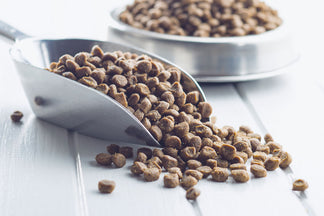We often stress the importance of reading the details on a pet food label. It is really the only way to evaluate if the food is a good fit for your dog or cat. Yet, many people simply look at the Brand and recipe name (along with the packaging) when making their pet’s food decisions.
Because dogs and cats require diets high in protein, and because proteins are the cause of the most common food allergies, it is very important to know exactly what protein sources are in your pet’s food. Yet, the pet food recipe name is not a reliable indication of the food’s actual ingredients. To determine just how informative the food names are, let’s look at one of the most popular pet food proteins: chicken.
Using the SlimDoggy food database of over 2,000 dog foods, I searched both the dog food names and the full ingredient lists for the word chicken. The results are pretty astounding and prove my point. (This analysis was done on foods only and did not include treats. However, the results are similar if treats are included.)
What is in Dog Food? Chicken?
The first step was to find out how many foods contained the word chicken in their name. The answer was, a lot. A total of 24% of foods used the word chicken in their name. Next, I searched the ingredient lists to find out how many foods actually contained chicken. As shown in the graph, almost 69% of the dog foods we searched contained chicken as one of their ingredients, even though only 24% of these foods used chicken in their name.
The Importance of Knowing What is in your Pet Food
There are several key benefits to pet owners who read beyond the food name and dig into the ingredients of their pet’s food. Besides being able to check for artificial ingredients like colorings and preservatives, reading the ingredients can help your pet avoid known food allergens or, in some cases, the onset of a food allergy.
Food allergies can often manifest themselves in the form of itchy skin and rashes and often are not diagnosed as the cause of the skin condition. The process of determining a pet’s food allergies can take some time (via elimination diets). But the only way to eliminate proteins is to make sure you aren’t feeding them to your pet! As demonstrated by our analysis, this requires a more careful look at the pet food label.



 Food
Food
 Food
Food
 Food
Food
